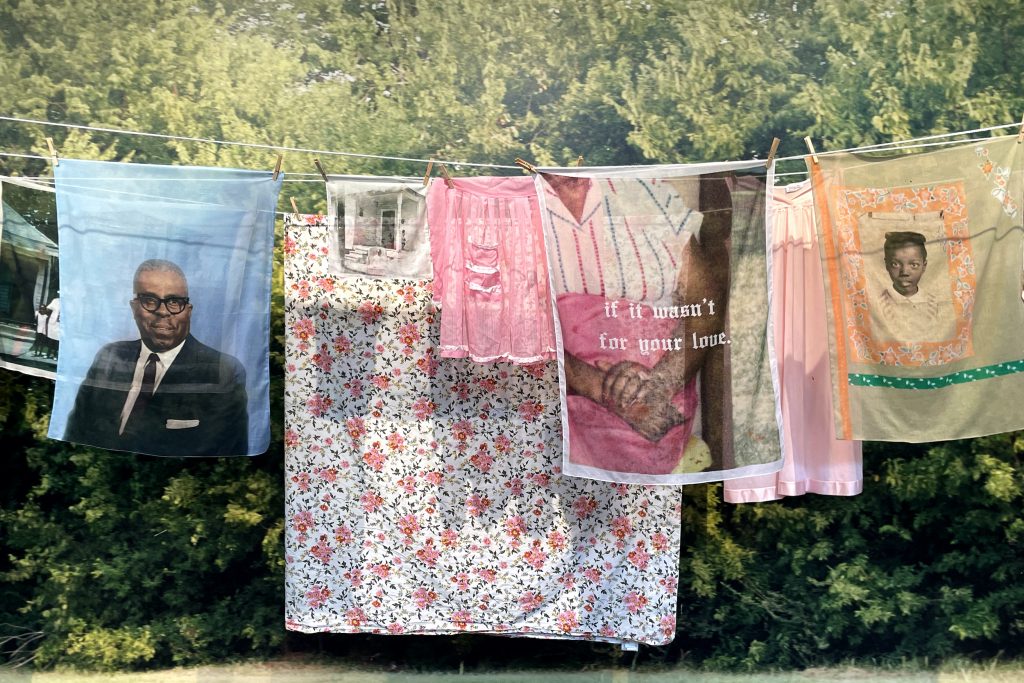HOUSTON – For the 2024 FotoFest Biennial, director and curator Steve Evans asked how photographers document erasure. From rural Texas to the cities of Hong Kong, political unrest, climate change and gentrification have constantly altered the landscape, obscuring hard histories.
The main exhibition Critical Geography At Silver Street Studios and Winter Street Studios in Sawyer Yards, it brings together 20 international artists in collectives, all questioning the politics of space. A smaller show, Ten tenIt highlights leading artists gathered in more than 400 portfolio reviews, and is exhibited biennially at more than 70 participating venues throughout Houston and its suburbs.
In Sawyer Yards, Siu Wai Hang and Phillip Pyle, II address censorship in their series of political protests. Clean Hong Kong Action (2019) and The Forgotten Battle (starting 2011). In photos of the 2019-20 Hong Kong protests, Hang punched out the faces of everyone in the crowd, both erasing their participation and protecting them from surveillance by the Chinese government, which has used facial recognition technology to arrest dissidents. The crowd is so thick in “2019-08-12-2019 Causeway Bay” (2019) that an entire section of the print is punched out. Pyle takes archival footage from civil rights actions and cuts out each sign of protest, obscuring whether these protesters were supporting equality or segregation, as in “Forgotten Struggle #32” (2011), whose Black protesters suggest this is a struggle for racial justice. that it was an act, but the missing signs leave the picture unresolved.

Series by Stephanie Syjuco Block the Sun it restores dignity through elimination. At the 1904 World’s Fair in St. Louis, an artificial Filipino village was included to showcase the newest territory of the United States. In it, Filipinos were forced to perform stereotypical acts in a human zoo. In photographs such as “Block Out the Sun (Shadow)” (2022) and “Block Out the Sun (Shield)” (2022), Syjuco protects images from archival prints from constant humiliation by placing his hands on them.
Another show THIS WAY: The Houston Band Show Houston’s Museum of Contemporary Arts paid homage to Freedmen’s Town, the longtime black town within the Fourth Ward. Irene Antonia Diane Reece’s multimedia installation “You Can’t Pray A Lie” (2023) uses oral history, photography and artifacts to reconstruct the neighborhood’s identity. She prints contemporary photos of community members onto plush fabric and attaches them to a clothesline, mixing the portraits with historical images of Freedmen’s Town, nightgowns, and flower bed sheets. The project connects the almost lost generation with the present, responsible for preserving the fragile memory of Freedmen’s Town.

At the First Unitarian Universalist Church of Houston, Wendel A. White’s series Red Summer he continued to remember forgotten landscapes. His humble photographs of parking lots, train stations, and chain-link fences, posted on walls next to church pews, are actually sites of lynchings. White juxtaposes each everyday cityscape with a sepia-toned newspaper clipping documenting the event, the crime sometimes buried beneath other headlines. Most of the news comes from African-American newspapers, emphasizing that the gruesome killings were hardly news to the white audience of mainstream publications. “Tulsa, OK. May 31, 1921. The New York Era. New York, NY. Sat., June 4, 1921” documents the Tulsa Race Massacre in one of the most important African-American publications of its time. After the massacre, the prosperous and wealthy corner of what was known as Black Wall Street is nothing more than a sloping road, fenced sidewalk and cracked asphalt.
For some artists, blocking out part of a photo is a way to protect their subjects. For others, their photographs recreate a location unfairly erased from history. In either case, Critical Geographies shows that the power of photography lies in what it chooses to document.







FotoFest Biennial 2024, Critical GeographiesIt continues throughout Houston on April 21 as well. The biennial was organized by Executive Director Steven Evans with the help of FotoFest staff.


